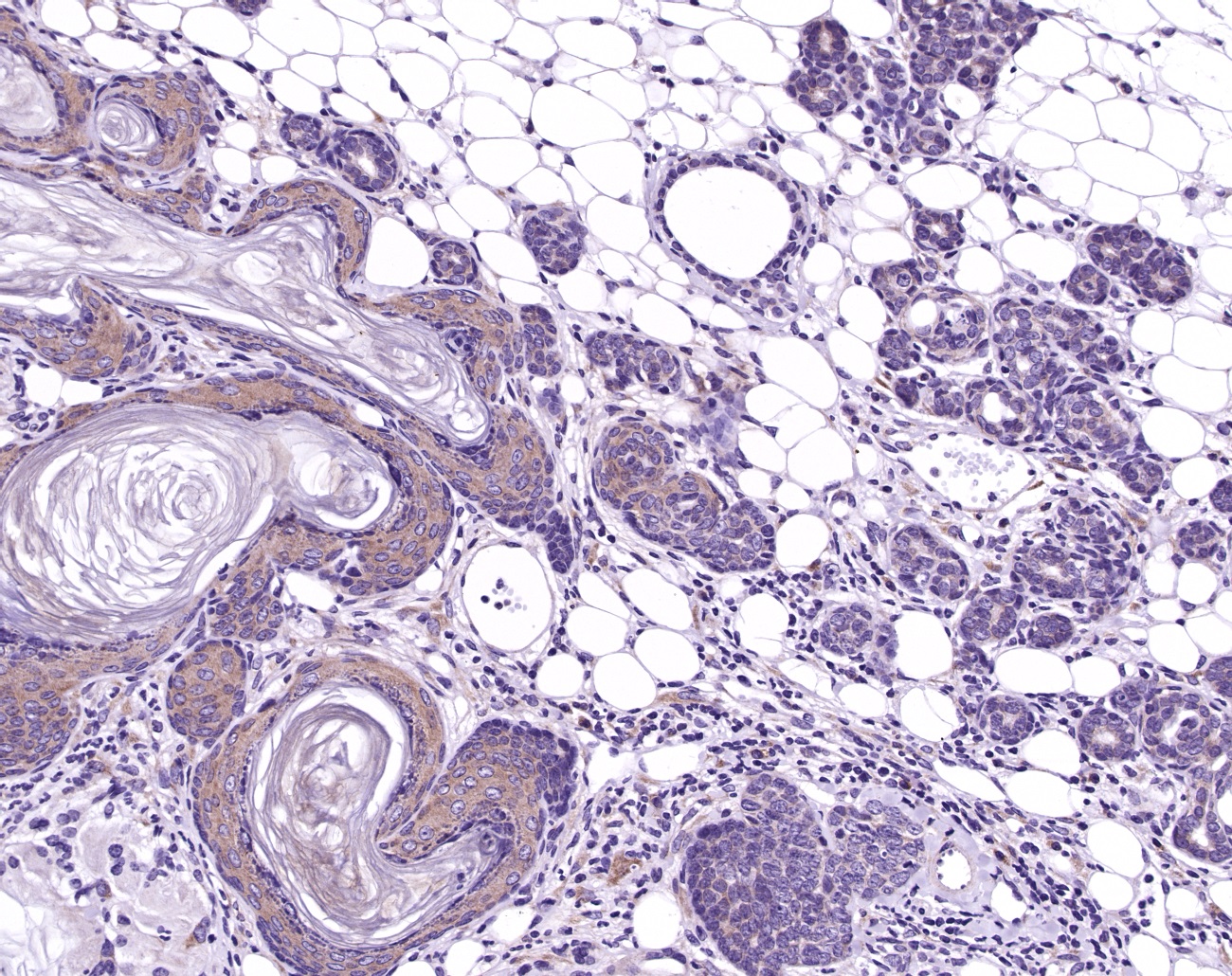Catalogue

Tiam 1 (Catalytic domain/ C-terminal domain)
Catalog number: MUB1807P| Clone | Polyclonal |
| Product Type |
Polyclonal Antibody Primary Antibodies |
| Units | 0.1ml |
| Host | Rabbit |
| Species Reactivity |
Human Mouse |
| Application |
Immunocytochemistry Immunohistochemistry (frozen & paraffin) Immunoprecipitation Western blotting |
Background
Directional cell migration is essential for various physiological processes such as embryonic development, angiogenesis, wound healing, and tumor invasion. In response to extracellular and cell adhesion signals, cells acquire a polarized morphology with a leading edge at their front and a trailing tail at the rear. This front-rear polarity is established along the directional axis, with signaling molecules, adhesions, and the cytoskeleton distributed asymmetrically. The signaling molecules that control polarity include the Rho family GTPases, including Rac1. The Rac exchange factor Tiam1 participates in polarized cell migration. Tiam1 binds to integrins through talin and regulates Rac1 activity and adhesion turnover for polarized migration.
Tiam 1 contains a Dbl homology (DH) or RhoGEF domain which consists of an ~ 150 amino acid region that induces Rho family GTPases to displace GDP. This effectively activates the Rho GTPase by allowing GTP binding, which is in excess over GDP in the cell. The DH domain is invariably preceded by a pleckstrin homology (PH) domain. While not absolutely required for catalysis of nucleotide exchange, the PH domain appears to greatly increase catalytic efficiency in many cases.
Tiam1 (T-cell lymphoma invasion and metastasis inducing protein 1) was originally identified as an invasion-inducing gene. Thereafter several studies supported the suggestion that the Tiam1-Rac signaling pathway may be involved in the invasion and metastasis of tumor cells.
Source
Human Tiam1 (catalytic domain/ C-terminal domain) is an affinity purified rabbit polyclonal antiserum derived by injection of rabbits with a GST fusion protein with the C-terminal amino acids 904-1511 of Tiam 1.
Product
Each vial contains 100 µl rabbit antiserum containing 0.09% sodium azide.
Formulation: Each vial contains 100 µl rabbit antiserum containing 0.09% sodium azide.
Specificity
Human Tiam1 (catalytic domain/ C-terminal domain) recognizes the C-terminal amino acids 904-1511 of Tiam 1 containing the DH-PH regions.
Applications
Human Tiam-1 (catalytic domain/ C-terminal domain) is suitable for immunoblotting, immunocytochemistry, and immunohistochemistry on frozen and paraffin-embedded tissues. Optimal antibody dilution should be determined by titration; recommended range is 1:100 – 1:200 for immunohistochemistry with avidin-biotinylated horseradish peroxidase complex (ABC) as detection reagent, and 1:100 – 1:1000 for immunoblotting applications.
Storage
The antibody is shipped at ambient temperature and may be stored at +4°C. For prolonged storage prepare appropriate aliquots and store at or below -20°C. Prior to use, an aliquot is thawed slowly in the dark at ambient temperature, spun down again and used to prepare working dilutions by adding sterile phosphate buffered saline (PBS, pH 7.2). Repeated thawing and freezing should be avoided. Working dilutions should be stored at +4°C, not refrozen, and preferably used the same day. If a slight precipitation occurs upon storage, this should be removed by centrifugation. It will not affect the performance or the concentration of the product.
Caution
This product is intended FOR RESEARCH USE ONLY, and FOR TESTS IN VITRO, not for use in diagnostic or therapeutic procedures involving humans or animals. It may contain hazardous ingredients. Please refer to the Safety Data Sheets (SDS) for additional information and proper handling procedures. Dispose product remainders according to local regulations.This datasheet is as accurate as reasonably achievable, but Nordic-MUbio accepts no liability for any inaccuracies or omissions in this information.
References
1. Hordijk PL, ten Klooster JP, van der Kammen RA, Michiels F, Oomen LC, Collard JG. Inhibition of invasion of epithelial cells by Tiam1-Rac signaling. Science 1997;27:1464-1466.
2. Mertens AE, Rygiel TP, Olivo C, van der Kammen R, Collard JG.
The Rac activator Tiam1 controls tight junction biogenesis in keratinocytes through binding to and activation of the Par polarity complex. J Cell Biol 2005;170:1029-1037.
3. Habets GG, Scholtes EH, Zuydgeest D, van der Kammen RA, Stam JC, Berns A, Collard JG. Identification of an invasion-inducing gene, Tiam-1, that encodes a protein with homology to GDP-GTP exchangers for Rho-like proteins. Cell 1994;77:537-549.
4. Lambert JM, Lambert QT, Reuther GW, Malliri A, Siderovski DP, Sondek J, Collard JG, Der CJ. Tiam1 mediates Ras activation of Rac by a PI(3)K-independent mechanism. Nat Cell Biol 2002;4:621-625.
5. Malliri A, van der Kammen RA, Clark K, van der Valk M, Michiels F, Collard JG. Mice deficient in the Rac activator Tiam1 are resistant to Ras-induced skin tumours. Nature 2002;417:867-871.
6. Wang S, Watanabe T, Matsuzawa K, Katsumi A, Kakeno M, Matsui T, Ye F, Sato K, Murase K, Sugiyama I, Kimura K, Mizoguchi A, Ginsberg MH, Collard JG, Kaibuchi K. Tiam1 interaction with the PAR complex promotes talin-mediated Rac1 activation during polarized cell migration. J Cell Biol 2012;199:331-345.
Safety Datasheet(s) for this product:
| NM_Sodium Azide |

Figure 1. Immunohistochemical detection of TIAM-1 in a mammary gland tumor as detected by MUB1807P.

